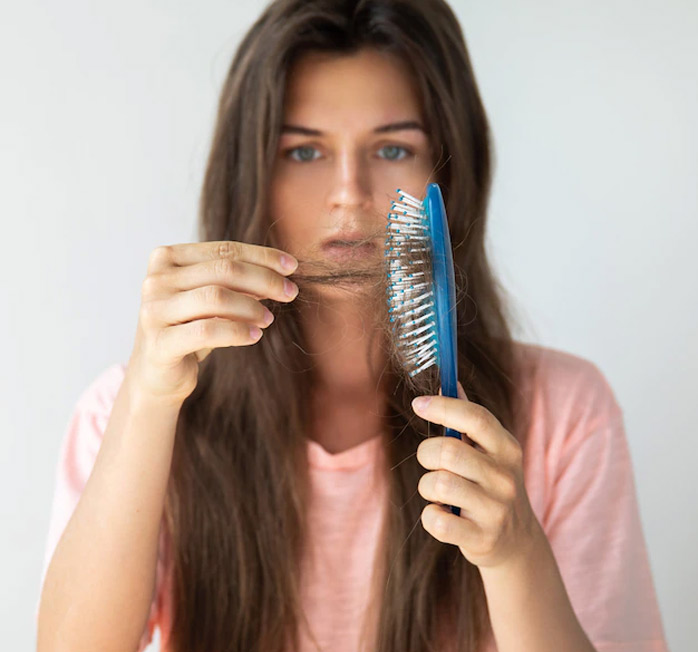Diagnosing Hair Loss
“A wisecrack once remarked that the only thing that can stop hair fall is the floor!”
Fortunately or unfortunately we live in a time where the vast number of treatment options available for hair loss can be overwhelming. However more options do not necessarily mean better options.
For example,
Imagine a door lock that you need to open. You have a set of 100 keys, of which only one will open the lock and the rest 99 will not. If you have no idea which one of the 100 keys is the correct key, chances are that you will never open the lock. You can of course make a lot of effort, try and twist the 99 keys in the keyhole, but there will be no effect. Just because you are making a lot of effort, the lock will not open with the wrong key.

Treating hair loss is something like opening the door lock. It needs the right hair loss diagnosis to unlock the solution which is also seen in American Academy of Dermatology Association. However most efforts are made without even understanding the right causes of hair loss in that particular case. In fact many efforts arise out of just guilt trips initiated by so-called well wishers. For example, you are losing hair because you are eating junk food, so now eat lots of fruit and vegetables, you are losing hair because you are not oiling it, so now put oil and keep oiling your hair till you resemble the oil spill in the Gulf of Mexico, or let’s use this obscure medication or this obscure light treatment which grew back two and half hairs in some laboratory rat, in some obscure part of the world…..
How is hair loss diagnosed?
We often read about there being more than 40 different types of hair loss. Sure there are, but they are found only in medical textbooks! In reality and clinical practice, there are about 4-5 types which are commonly seen – fungal infections, patterned hair loss, telogen effluvium, alopecia areata and nutritional deficiencies. To simplify the process of treating hair loss it is important to diagnose the condition and the below 3 steps play an important role in arriving at one –
- Medical History
- Tricho Analysis
- Blood Tests
Medical History
Gathering and recording information about hair loss is the first step in understanding the problem. How and when did the hair loss start, was there any identifiable trigger, were you on a crash diet, did you suddenly lose a lot of weight, did it start after relocating to a new place, an acute illness or after a stressful incident in your life.
The answers to the above questions can give vital clues to diagnosing the problem and differentiating between different types of hair loss conditions. In women, details regarding their menstrual history, pregnancy and menopause can help rule out hormonal causes of hair loss.


Tricho Analysis
Tricho Analysis uses advanced technology for in-depth analysis of hair and scalp.
Hair has a very long term memory. From the geographical areas you have visited to the type of diet you have had, it records almost every change that you undergo. The protein in hair fiber holds the composition of the body tissues for a permanent period. By analyzing the hair fiber composition, a trained eye can tell what toxins have accumulated in the body tissues and what vitamins and minerals are depleted or too abundant causing an imbalance in body function.
It can be overwhelming to walk into a vitamin store and wonder out of the thousands of bottles on the shelves, “Which ones do I need?” The hair loss diagnosis specifies which supplements your body is lacking, and which, if any, you are too high in. It tells you what your body needs, or doesn’t need, nutritionally. Sometimes there may be overlapping conditions. For example patterned hair loss may be further accelerated with fungal infection, in which case both factors need to be treated together for better control of hair loss.
For example, in the case of a 25 year old woman, the hair and scalp analysis revealed an unusual pattern of hair loss for her age. Her past medical history showed she had an abortion, the cause of which remained unexplained. Further testing revealed a thyroid disorder which also remained undiagnosed. Had the thyroid condition remained undetected, she would have probably undergone more such abortions and progressive hair loss. Similarly there are numerous such cases where the hair analysis reveals a pattern of excess smoking or alcohol consumption, things which are often not disclosed by the patient.
Hair Analysis is a useful screening method for identifying the various harmful toxic substances that accumulate in the body after exposure to air, dust, soil, water etc. While these substances can also be detected in urine, their presence there is often temporary. Hair on the other hand retains the presence of these harmful agents even long after the exposure is over and therefore gives a very accurate picture of the past. For example nearly 200 years after Napoleons death, his hair analysis revealed that he might have died from Arsenic poisoning rather than stomach cancer as it was previously believed.
Blood Test
Blood tests are the final clinchers. They play a crucial role in ruling out underlying medical conditions that are related to hair loss like anemia, vitamin deficiencies, thyroid problems, hormonal imbalances, discoid lupus erythematosus and many more.
A correctly made diagnosis and that done at the right time plays a key role in the process of effective treatment. It helps in recommending a cause-specific line of treatment. It is especially important in certain types of hair loss conditions where it is possible to restore the initial hair condition.



